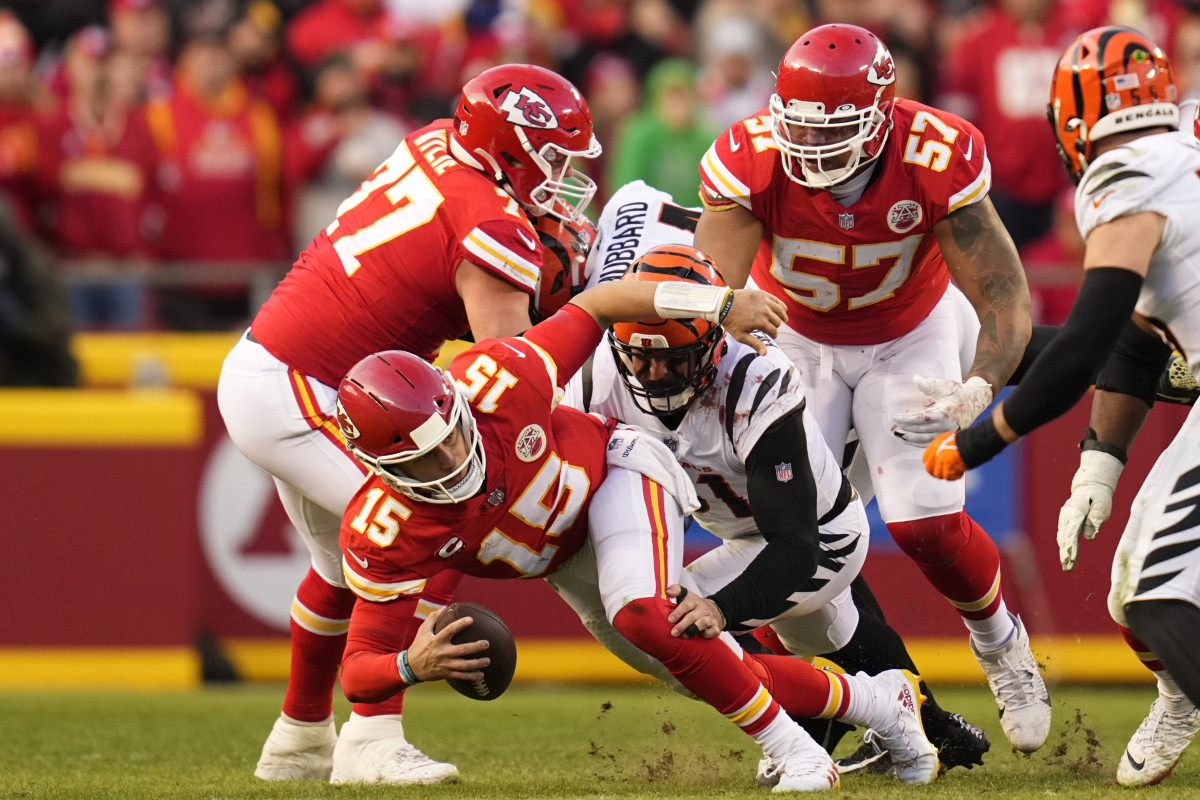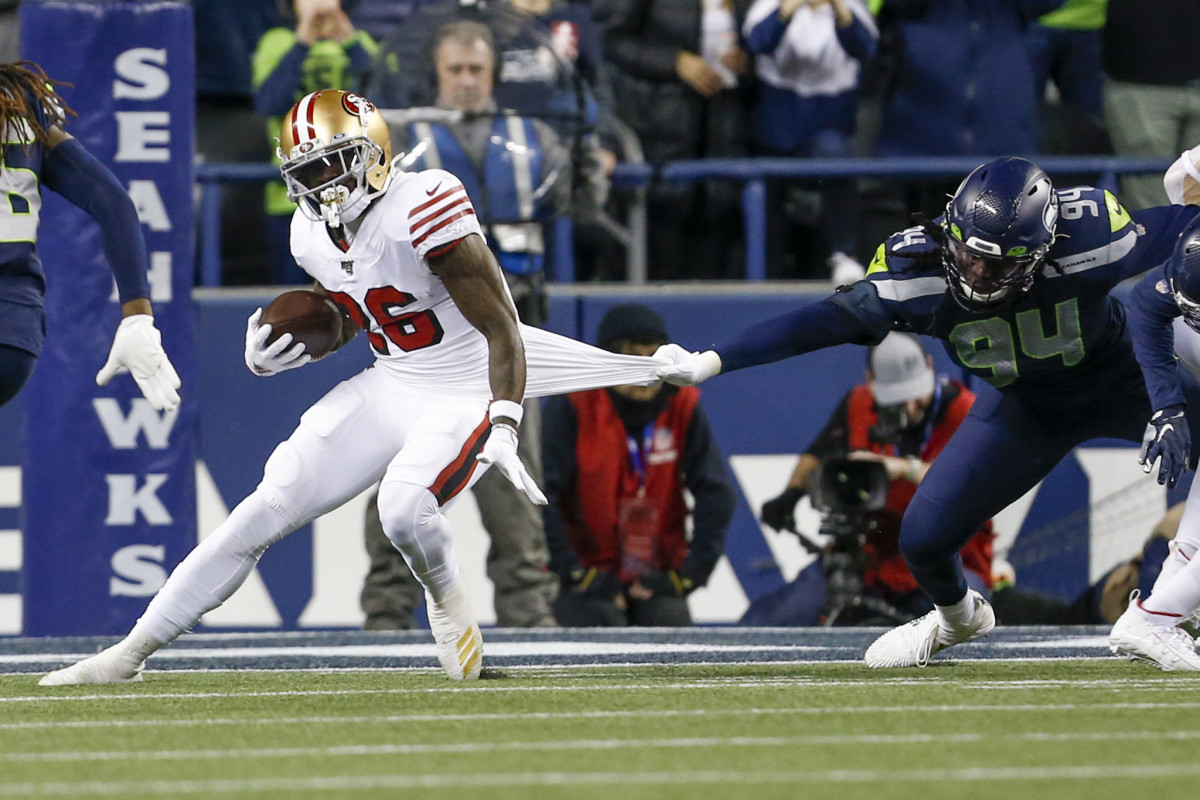What John Schneider, Seahawks Can Learn From Bengals Ascent to Super Bowl Contender
After winning a combined six regular season games in the previous two seasons, the Bengals capped off one of the most unexpected Super Bowl runs in NFL history by erasing an 18-point lead to pull off a 27-24 overtime upset of the Chiefs in Sunday's AFC Championship Game at Arrowhead Stadium.
For decades, Cincinnati has been of the league's most downtrodden franchises. After being ousted in the divisional round of the 1990 NFL playoffs, the organization only made one postseason appearance over the next 18 years. Even when the Bengals made the playoffs six times in a seven-year stretch with coach Marvin Lewis on the sidelines from 2009 to 2015, they lost in the wild card round each time.
Considering that long run of ineptitude, the Bengals have been anything but a model franchise to emulate. But after transforming from a four-win team into a Super Bowl-bound squad in just one year, other teams would be wise to study their blueprint to the big game and adjust how they do business accordingly.
In the case of general manager John Schneider and the Seahawks, who sat at home this postseason after a disappointing 7-10 season that culminated in a last place finish in the NFC West, the quest to return to contention could be aided tremendously by learning a lesson or two from how the Bengals built their championship roster.
Obviously, Cincinnati has benefitted from holding top-five draft choices in recent seasons, allowing the organization to draft a franchise quarterback in Joe Burrow and an elite playmaking receiver in Jamaar Chase. Director of Player Personnel Duke Tobin has also done a good job finding talent in later rounds, including landing receiver Tee Higgins, linebacker Logan Wilson, guard Hakeem Adeniji, and kicker Evan McPherson.
Similar to Seattle's emergence in 2012, a championship core has been built in large part due to a homegrown foundation. As will always be the case, Schneider will be aiming for improved results in the draft to add young, starter-caliber players to the mix to bolster the roster. That's a given.
But even with Burrow, Chase, running back Joe Mixon, Wilson, and other players drafted by the Bengals playing crucial roles in helping them punch a ticket to the Super Bowl for the first time since 1988, the franchise would not be heading to Los Angeles to face the Rams without the aggressive moves made in free agency. Last March, Tobin and the front office went to work adding true difference makers on the defensive side of the ball.
Taking advantage of the cap space at their disposal, the Bengals made their first splash signing defensive end Trey Hendrickson to a four-year, $60 million contract. Focus then shifted to the secondary, as Tobin inked cornerbacks Mike Hilton and Chidobe Awuzie to multi-year deals worth up to $24 and $21.75 million respectively. Replacing departing legend Geno Atkins, former Browns starter Larry Ogunjobi was stolen from an AFC North rival and signed to a one-year, $6.2 million deal.

How did those signings work out? Tobin couldn't have possibly asked for more from those four players, starting with Hendrickson, a player many considered to be a risky signing after posting a career year with the Saints in 2020. All he did for an encore was lead the Bengals with 14.0 sacks in the regular season and has produced 2.5 sacks, four quarterback hits, and 11 pressures in the team's three playoff wins so far.
As for Awuzie and Hilton, both corners played in at least 14 games, intercepting a pair of passes apiece and combining to record 16 pass breakups while bringing much-needed stability to the secondary. In the playoffs, Hilton picked off Ryan Tannehill in an upset win over the Titans and has two additional pass breakups. Up front, Ogunjobi proved to be a fantastic value signing, finishing third on the team with 7.0 sacks.
Three of those players will be under contract for the Bengals in 2022, with Ogunjobi being the only one set to hit the free agent market. All four players were under the age of 27 when they signed as well, meaning they should be in the prime of their respective careers.
It's an understatement saying Tobin knocked free agency out of the park and those moves should benefit the franchise for the next couple of years. As an outsider looking for ways to jumpstart the Seahawks back in the right direction, hopefully Schneider has taken some notes.
Over the past several offseasons, Schneider has preferred to go discount shopping in free agency, choosing quantity over quality in many cases by signing a bunch of mid-level veterans who won't break the bank. More times than not, he has signed players on the cheap who simply didn't move the needle at all in regards to pursuing a championship. When he has opened up the checkbook, he has burned money while seemingly bidding against himself for underwhelming veterans.
For example, last March, Schneider had an opportunity to potentially land a top-tier offensive lineman with center Corey Linsley and guard Joe Thuney available in free agency. Instead, he spent a combined $17 million handing out contracts to tight end Gerald Everett, defensive end Kerry Hyder, and cornerback Ahkello Witherspoon. An additional $20 million were allocated to re-sign pass rushers Carlos Dunlap and Benson Mayowa.
With Dunlap's second half surge being the lone exception, those decisions ultimately didn't work, as Hyder and Mayowa combined to produce 2.5 sacks, Everett endured an up-and-down season with drop and ball security issues, and Witherspoon was traded during training camp to the Steelers. Meanwhile, Linsley didn't allow a sack for the Chargers and Thuney allowed just one sack for the Chiefs with both playing at All-Pro levels for their new teams.
Choosing to bypass on Linsley or Thuney would have been more forgivable if the Seahawks landed a quality center in the NFL Draft. But of course, Schneider skipped over Oklahoma standout Creed Humphrey in favor of receiver Dee Eskridge, only for Humphrey to be named an All-Pro as a rookie.
Unfortunately, how last offseason unfolded wasn't an exception to the rule for Schneider. It has become the standard. In 2020, he managed to waste nearly $23 million million in cap space on one-year deals for an aging Greg Olsen, center B.J. Finney, running back Carlos Hyde, and defensive end Bruce Irvin. One year earlier, he gave a washed up Ezekiel Ansah a one-year, $9 million deal and made Jason Myers one of the five highest-paid kickers in the sport. In 2018, he [gulp] gave former Jaguars first round bust Luke Joeckel $8 million guaranteed for a year.

For Seattle to climb back into contention in the NFL's toughest division, Schneider has to be willing to pay for game changing, difference making talent. Having a quarterback with a $35-plus million cap charge on the books complicates matters, but that can't be an excuse anymore. No more conducting the malpractice that is overpaying for former first round picks that no other teams want or signing 15 veterans who either are past their prime or didn't get the job done with their previous team(s). Those tactics aren't getting the job done.
This doesn't mean that discount shopping has completely gone out of style. Schneider can still find bargains along the way who can help his football team and nobody would bat an eye at such moves if they came after making a splash or two to fill out the roster. But those are not the type of signings that will vault the Seahawks back into Super Bowl contention or keep Russell Wilson happy under center.
Whether it's landing a younger blind side protector like Orlando Brown Jr. or bringing a standout pass rusher like Chandler Jones on board, Schneider needs to add star power at an important position as the Bengals did when signing Hendrickson last spring. From there, he should be looking for younger free agents like Awuzie whose best football likely remains in front of them and can be long-term contributors rather than living off a bunch of one-year rentals with players north of 30 years old.
There's a lesson to be learned here that Schneider hasn't been able to comprehend or fully grasp to this point. He has to do a better job allocating the team's limited cap space to acquire legitimate difference makers. Maybe, just maybe, after the Seahawks missed the playoffs for the first time in five years and lost 10 games for the first time in his tenure, he will finally change up his strategy in free agency and follow the blueprint of the upstart franchise north of the Ohio River.
